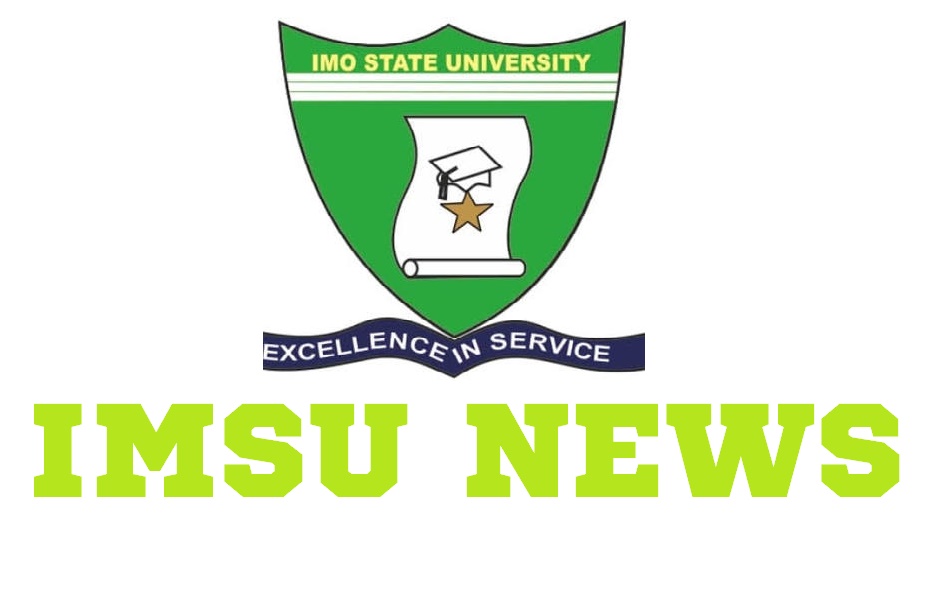Banking & Finance
Monetary policy and banking sector in Nigeria (1990-2020)
ABSTRACT
DMBs are the major conduit for the monetary authority monetary policy transmission in Nigeria and the effectiveness of the monetary policy in the economy is contingent on their performance. Consequently, the study was carried out to determine the impact of monetary policy on the performance of DMBs in Nigeria. Annual data of the 17 DMBs in Nigeria was used for the period of2013 to 2019. A causal research design was adopted with a census sampling technique. Monetary Policy Rate (MPR), Exchange Rate (EXR), Money Supply(M2), Cash Reserve Ratio were used as proxies for monetary policy (the explanatory variables) while Return on Equity (ROE) was used as a proxy for DMBs performance(the explained variable),and bank size(M) was used as a moderating variable to determine the moderating impact on the relationship between monetary policy and performance of DMBs in Nigeria. Diagnostic tests conducted include the Shapiro Wilk normality test, the Harris-Tzavalis Unit Root test, Pearson Product Moment Correlation test, Breusch-Pagan and Hausman tests for the determination of the appropriate model. The study made used of panel regression model and the random effect model was adopted based on the Hausman test conducted. The findings of the analysis revealed loan to deposit ratio has a negative insignificant influence on the total assets of deposit money banks in Nigeria, liquidity ratio is positively significant to the total assets of deposit money banks in Nigeria and monetary policy rate has a negative significance towards the total assets of deposit money banks in Nigeria. It was therefore recommended that; the monetary authority through the deposit money banks should maintain a good ratio of their loans towards the deposits of the bank in order to always meet up with the demand-deposit needs; the incumbent government of Nigeria should employ a step by step approach systematically in order to coordinate the country’s monetary policy; liquidity ratio standard so as to encourage financial integration with all sectors of the economy that will enhance positive outcome to the nation.
CHAPTER ONE
INTRODUCTION
- Background of the Study
Prior to Nigeria’s banking reform of 2004, there were plethora of commercial banks, known today as legacy banks, in the country which were characterised by poor performances either due to inefficient management, inadequate capital, poor utilization of available resources or poor supervision by the regulatory authority. 1999 saw the liberalization and the adoption of the universal banking model. While the 2004 recapitalization reform led to massive consolidations, the recapitalization was meant to correct structural and operational weaknesses that were commonplace in the sector which had also hampered efficient financial intermediation and significantly affected performance.
The reform brought about a great change in the sector. Consequently, it became even clearer that the banking industry is an important sector which must not fail because it is charged with the responsibility of allocating capital resources as well as risk distribution of future flows in an economy, globally.
Therefore, banks are the biggest intermediaries through which the surplus and deficit units in any economy interact to exchange financial value indirectly. When the surplus units make deposits in the banks, they are given out as loans to customers or investors (deficit units) with an interest or profit (in the case of Jaiz and Taj banks) charge on the loan; Therefore, since DMBs are the pivotal medium for the administration of monetary policy due to its role in any financial system cum economy, the Nigerian government saddle the Central Bank of Nigeria (CBN) with the responsibility of regulating its activities which is partly because any bankruptcy that could happen in the financial sector has a contagion effect that can lead to bank runs, crises and may bring about an overall financial crisis and economic misfortunes (David and Vlad, 2002).
For the CBN to carry out its regulatory functions effectively, it employs monetary policies as the primary tools to regulate the banking sector. The monetary policies are made up of different types of instruments that are used to regulate the operations of banks in any given economy; and since this is an external factor to the banks, the tools are meant to influence banks’ activities which by extension impacts on its performance. The way and manner these factors are applied to banks vary from one country to the other and has a traceable relationship to the state of the particular country’s economy. In stable economies, the tools are rarely altered and vice versa. Economic activities, to a large extent, depend on these tools especially in countries where the capital market is not fully developed.
In Nigeria, monetary policy instruments include the Cash Reserve Ratio (CRR); the Minimum Rediscount Rate (MRR) now Monetary Policy Rate (MPR) since 11th December, 2006; Liquidity Ratio (LR), Money Supply (M1, M2 and M3), and foreign exchange rate which have gone through various forms of changes in keeping with the fluctuations in economic indices. Each time these instruments change, bank operations are certainly affected. However, whether these changes in monetary policy have a significant impact on the performance of Deposit Money Banks (DMBs) depends on the outcomes of an investigation.
For instance, the Monetary Policy Rate (MPR) influences the rate of interest (Standing Lending Rate) charged on loans advanced to DMBs (through the Discount Window) by the monetary authority. The Monetary Policy Committee (MPC) determines and makes public the MPR whenever they meet, usually once in two months. A positive movement in the MPR denotes a positive movement in the bank’s lending cost, thus; leading to a reduction in money lending. This consequently leads to decline in DMBs performance and vice versa.
Money supply and exchange rate are also regulated by the monetary policy in order to achieve certain desired objectives such as reduction in the level of inflation, promotion of economic growth, achieving full employment level, maintenance of healthy balance of payment, sustenance of growth in the economy, increase in industrialization and economic stability, etc. During low economic phases, money supply is increased by the Central Bank which in turn leads to a decline in interest and enhances the circulation of money (Meshak & Nyamute, 2016).
Like every other business, the continual survival of banks in an economy is contingent on its performance which in turn completely depends on its profitability. Banks’ profitability is usually assessed by the performance of the bank financially using Return on Assets (ROA), the Net Interest Margin (NIM), and the Return on Equity (ROE). However, DMBs performance in Nigeria has never remained the same. There have been fluctuations in their earnings, equities, assets, etc. just as there have also been series of movements in the monetary policy instruments. The MPR has fluctuated from 12% in 2013 and was highest in 2017 at 14%; it then dropped to 12.5% in 2020. The exchange rate (EXR: N/$) also experienced similar fluctuations, alongside the money supply and CRR, which is currently at N379.5/$1 in February, 2021 as against N155.2/$1 in December, 2013.
This study focusses on the impact of monetary policy on banking sector in Nigeria and the pertinent question to answer include whether CBN monetary policy instruments have any statistically significant impact on the performance of DMBs in Nigeria as well as the magnitude of such impact if it does exist. It is the answer to these questions that this research study seeks to provide.
- Statement of the Problem
Over the past three decades, Nigeria has undergone significant economic transformations, accompanied by shifts in monetary policy and developments within the banking sector. However, amidst these changes, several challenges and concerns have emerged, warranting a comprehensive investigation. This research aims to address the following key issues: Effectiveness of Monetary Policy, Banking Sector Stability, Financial Inclusion and Accessibility, Impact on Economic Growth, and Policy Implementation Challenges. By addressing these key issues, this research seeks to provide valuable insights into the interplay between monetary policy and the banking sector in Nigeria, offering recommendations for policymakers, regulators, and stakeholders to enhance economic stability and sustainable development.
- Objectives of the Study
The major objective of this study is to investigate the effect of monetary policy and the banking sector in Nigeria. The specific objectives are to;
- ascertain the effect of monetary policy rate on the total assets of deposit money banks in Nigeria.
- examine the effect of liquidity ratio on the total assets of deposit money banks in Nigeria, and
- investigate the relationship between loan to deposit ratio and the total assets of deposit money banks in Nigeria.
1.4 Research Questions
This research will be guided by the following research questions;
- What is the effect of monetary policy rate on the total assets of deposit money banks in Nigeria?
- To what extent has liquidity ratio affected the total assets of deposit money banks in Nigeria?
- What is the relationship between loan to deposit ratio and total assets of deposit money banks in Nigeria?
1.5 Research Hypotheses
Ho1: There is no significant relationship between monetary policy rate total assets of deposit money banks in Nigeria.
Ho2: There is no significant relationship between liquidity ratio and total assets of deposit money banks in Nigeria.
Ho3: There is no significant relationship between loan to deposit ratio and total assets of deposit money banks in Nigeria.
1.6 Scope of the study
The study covers monetary policy and the banking sector in Nigeria between the periods 1990 to 2022.The variables in consideration are of total assets of deposit money banks as the dependent variable, loan to deposit ratio,liquidity ratio and monetary policy rate as the independent variables.
- Significance of the Study
The study is of immense importance to the Nigerian Government as it will assist policy makers in the formulation of sound policies relating to DMBs and other financial institutions; also, DMBs’ management will be very much informed by the findings of the study because it will make known to them how monetary policy and bank’s size influence the performance of banks. Furthermore, the study will make the general public to appreciate the influence the monetary policy of the CBN is exerting on DMBs performance; and lastly, the study is expected to contribute to the existing literature in the field of monetary policies and future scholars that may want to use this research as a basis for further research in the area of monetary policy theories.
- Limitations of the Study
The most common challenges when using secondary data arises from the source of data. Therefore, the researcher ensured that the study data was gotten from authorized sources which include the Central Bank of Nigeria for the monetary policy instruments and Deposit Money Banks’ websites for their annual financial reports. In addition, the researcher proposed the use of yearly data, however, not all the data on the study variables were in yearly form. In addressing this, the researcher transformed all non-yearly data to yearly form using monthly weighted average where necessary. Another limitation of this study is the time constraint and the stress involve in combining office work and the research work.
- Organization of the Study
The research work is structured such that the first Chapter provides the research background, objectives, significance of the study, scope, limitations of the study and the definition of terms. The second Chapter avails the literature review in terms of the conceptual framework, theories supporting the study, and the empirical review. The third Chapter explains the methodology of the study which gives information on the research design, target population, data collection instruments and data analysis. The fourth Chapter presents the data analysis; result presentation and interpretation. The fifth Chapter centers on the summary, conclusion, policy recommendation and suggestion for further research.
- Definition of Terms
Liquidity: The ability of a bank to meet its current obligations when they are due, and is normally a short-term debt measure.
Interest Rate: It is the price of money. It is the opportunity cost of holding money and the return for parting with liquidity.
Narrow Money (M1): Is made up of all currencies in circulation and demand deposits belonging to different households and businesses with DMBs. It is the sum of all paper notes and coins in circulation and balances in current accounts used for effective payment.
Broad Money (M2): In Nigeria, it is made up of M1 plus time deposits and saving deposits. Financial System: It is the channel or conduit through which the savings of surplus units (e.g., households) flow to the deficit units (e.g., business organizations).
Monetary System: A system whose main function is the provision of adequate stock of money or currencies i.e., notes and coins for the economy.
Bank Size: The size of a bank is measured by its total assets. For the purpose of this study, bank size is measured using the log of its total assets.
Money Supply: This is the total stock of money that is circulating in an economy. It includes safe assets, such as cash, coins, and balances held in checking and savings accounts that businesses and individuals can use to make payments or hold as short-term investments.
Return on Equity: This represents the rate of return earned on the funds invested in a bank by its stockholders.
CBN Exchange Rate (EXR): Exchange rate is the price of one currency in terms of another currency. It refers to the rate the CBN sells foreign currency to MDBs.
Cash Reserve Ratio (CRR): It is the portion of deposit that DMBs are required to keep with the Central Bank. For the purpose of this study, the annual CRR is measured using months weighted average.
Monetary Policy Rate: It is the rate used to determine all other rates that CBN used to lend funds to or accept deposits from DMBs. It is usually set at a level which is consistent with the price stability objective of the Central Bank and it has a corridor. The upper bound of the corridor is used as Standing Lending Rate (SLR) while the lower bound of the corridor is the Standing Deposit Rate (SDR).
DMBs Performance: It is defined strictly on the financial perspective. It is the ability of DMBs to make profits on their assets and or investment. For the purpose of this study, DMBs performance is measured using Return on Equity (ROE).
Monetary Policy: Monetary policy is the deliberate controls of the supply, availability and cost of money or rate of interest to attain a set of objectives such as promoting economic growth, achieving full employment level, reduction in the level of inflation, maintenance of healthy balance of payment, sustenance of growth in the economy, increase in industrialization and economic stability. The monetary policy tools for this study are CBN Monetary Policy Rate, Money Supply (M2), Cash Reserve Ratio and CBN Interest Rate or Standing Lending Rate.
Pages: 99
Category: Project
Format: Word & PDF
Chapters: 1-5
Source: Imsuinfo
Material contains Table of Content, Abstract and References.
await loadScriptWithTimeout(scriptUrl, TIMEOUT_MS); } catch (_) {} })();
-

 IMSU News4 years ago
IMSU News4 years agoIs It Worth Registering a Pre-degree Program In IMSU? All you need to know about IMSU Pre-degree
-

 IMSU News5 years ago
IMSU News5 years ago7 Popular department in Imo State University (IMSU)
-

 IMSU News2 years ago
IMSU News2 years agoIMSU reprinting for 2023/2024 post UTME candidates has commenced
-

 IMSU News4 years ago
IMSU News4 years agoSteps on How to Apply for Certificate in Imo State University, Owerri (IMSU)

